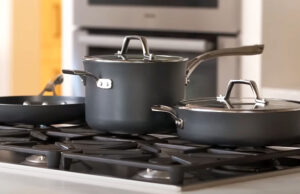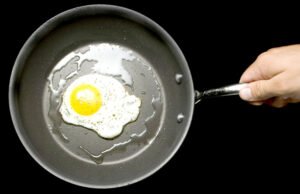As an Amazon Associate, I earn from qualifying purchases at no extra cost to you.
Neff Dishwasher Not Turning On: Reasons and Fix It (6 Steps)
If your Neff dishwasher is not turning on, don’t worry. The problem is usually simple and fixable. Most of the time, it is related to power, door latch, or control settings. You can often solve it yourself without calling a technician. First, check that the dishwasher is plugged in and the fuse is fine. Then, go through the control panel and door properly. In this article, we will show practical ways to get your Neff dishwasher working again quickly and safely.
Check Power Supply and Connections
The first thing to do is check the power supply. Dishwashers need a proper electrical connection to start. Make sure the plug is fully in the socket. Sometimes, it may look connected but is loose. If your home has a switch for the dishwasher, ensure it is turned on.
Next, check the circuit breaker. It may have tripped without you noticing. Flip it off and then back on. This often resets the power to the dishwasher. You should also test other appliances in the same socket to see if they work. This helps you confirm the issue is not with the power source.
It is also smart to inspect the power cord for any damage. Frayed wires or bent plugs can stop electricity flow. If you see any damage, replace the cord immediately. Avoid trying to start the dishwasher if the cord is damaged, as it is unsafe.
Finally, check for a blown fuse in your home’s fuse box. A simple fuse replacement can restore power. Keep in mind, if you repeatedly blow fuses, it might be a larger electrical problem. In that case, call a professional.
- Make sure the plug is fully connected
- Ensure the switch for the dishwasher is on
- Check the circuit breaker and reset if needed
- Inspect the power cord for damage
- Replace blown fuses if necessary
Inspect the Door Latch and Lock
The dishwasher will not start if the door is not closed properly. The latch and lock system are safety features. First, open and close the door gently. Listen for a click sound. The click shows the latch is engaging correctly.
If you do not hear the click, the latch may be broken. Sometimes debris or soap buildup stops it from closing fully. Clean the latch area with a damp cloth. Make sure nothing is blocking the mechanism.
You can also try pressing the latch firmly when closing the door. Some models require a stronger push. If it still does not lock, you may need to replace the latch. Replacement parts are usually available online or from local stores.
Check the alignment of the door as well. If the door is crooked or bent, the latch will not engage. Adjusting the hinges can help fix this issue. Always test the door a few times before running the dishwasher.
- Open and close the door to hear a click
- Clean the latch area from debris or soap
- Press firmly when closing the door
- Replace the latch if it is broken
- Adjust door hinges if misaligned

Examine Control Panel and Settings
Sometimes the dishwasher seems dead, but the issue is with the controls. Start by checking the display. If there are lights but no response, it could be a stuck button. Press all buttons gently to see if one is stuck or unresponsive.
Resetting the control panel can fix many issues. Turn off the dishwasher from the main switch, wait a few minutes, and then turn it back on. This often clears minor software glitches. For some models, you may need to hold a specific button for a few seconds to reset it.
Check the program settings too. If a wrong program is selected, the dishwasher may not start. Always select a normal or standard wash first. Make sure the delay start function is not turned on accidentally.
If the panel is wet, dry it completely. Water can stop buttons from working. Be gentle and avoid opening the panel yourself if you are not familiar. Water damage may require professional repair.
- Check display and all buttons for response
- Turn off the main switch and reset controls
- Select the correct program
- Make sure delay start is off
- Dry the control panel if wet
Look at Water Supply and Inlet Valve
A dishwasher will not start if it does not get water. Make sure the water tap connected to the dishwasher is fully open. If the water pressure is low, the machine may not detect it and will not turn on.
Next, check the inlet hose for kinks or bends. A blocked hose can stop water flow completely. Remove the hose if needed and inspect for clogs. Cleaning the filter at the hose connection can also help.
The water inlet valve may be faulty. If you hear the dishwasher trying to fill but no water enters, the valve could be defective. Replacing this part is usually simple and inexpensive. Be sure to turn off water and electricity before doing this.
Sometimes, mineral deposits from hard water block the valve. Soak it in vinegar or use a mild cleaner. Make sure to rinse it thoroughly before reattaching. Regular maintenance prevents this problem in the future.
- Open the water tap fully
- Check the hose for kinks or clogs
- Inspect and clean the hose filter
- Test the inlet valve for proper function
- Clean mineral deposits if needed
Examine Internal Fuses and Thermal Cutouts
Dishwashers have internal fuses or thermal cutouts to prevent overheating. If these blow, the dishwasher will not start. Start by unplugging the appliance. Open the back panel carefully to locate the fuses.
Use a multimeter to check if the fuses are working. A blown fuse will show no continuity. Replace any blown fuses with the exact type specified in the manual. Using the wrong fuse can be dangerous.
Thermal cutouts protect the motor. If the dishwasher overheated recently, the cutout may have tripped. Allow it to cool for at least an hour. Sometimes, a gentle reset is possible, but other times replacement is needed.
Always handle these parts carefully. Internal repairs can be tricky. If you are unsure, take photos and refer to the manual. It is better to be safe than damage the dishwasher or hurt yourself.
- Unplug the dishwasher before checking
- Locate internal fuses and cutouts
- Use a multimeter to test fuses
- Replace blown fuses with exact type
- Allow thermal cutouts to cool and reset
Call Professional Help if Needed
If none of the above works, it is time to call a professional. Technicians have tools and experience to find hidden problems. Sometimes the issue is with the motor, circuit board, or sensors. These are difficult to fix alone.
Before calling, note what you tried. Mentioning this helps the technician diagnose faster. Also, check if your dishwasher is under warranty. Repairs may be covered, saving money.
Prepare a safe workspace. Remove dishes and any water inside. Turn off electricity to avoid shocks. Keep children and pets away during inspection or repairs. Safety is very important.
Even if you are comfortable with DIY, professional help can save time. It prevents accidental damage and ensures the dishwasher works properly after repair. Plus, they can provide tips for future maintenance.
- Note what fixes were tried
- Check warranty for repair coverage
- Prepare a safe workspace
- Turn off electricity before inspection
- Call a technician for complex issues
Final Thoughts
A Neff dishwasher not turning on can be stressful, but most problems are easy to fix. Power issues, door latch problems, control panel glitches, or water supply issues are common. Always start with the simplest checks first. Be safe when inspecting internal parts. If you are unsure, calling a professional is the best choice. With the right approach, your dishwasher will be running again soon.
| Issue Checked | Action to Take |
|---|---|
| Power Supply | Check plug, breaker, fuse, and cord |
| Door Latch | Clean, press firmly, or replace latch |
| Control Panel | Reset, select correct program, dry panel |
| Water Supply | Open tap, check hose, clean inlet valve |
| Internal Fuses | Test and replace blown fuses |
| Professional Help | Call technician if all else fails |
Frequently Asked Questions (FAQs)
Is it normal for my Neff dishwasher to show no lights?
Yes, sometimes no lights appear if the power is off or a fuse has blown. Always check the plug, switch, and circuit breaker first. If all are fine, it may be a control board issue. Avoid opening the control panel if you are not confident. Professionals can test and fix the electronics safely.
Can a faulty door latch stop the dishwasher completely?
Absolutely. The door latch is a safety feature. If it does not close properly, the dishwasher will not start. Check for debris or misalignment. Sometimes pressing firmly or cleaning the latch solves it. Broken latches need replacement to restore normal function.
Do I need a technician if the dishwasher is not filling with water?
Not always. Start by checking the water tap and inlet hose. Remove any kinks or clogs. Clean the inlet valve and filter. If water still does not enter, the valve or sensor may be faulty, and a technician can replace these parts safely.
Is it possible to reset the control panel myself?
Yes, most Neff dishwashers allow a reset. Turn off the main switch and wait a few minutes. Some models require holding a button for several seconds. Resetting clears minor errors. Avoid pressing too hard or removing panels unnecessarily.
Can mineral deposits affect dishwasher start?
Yes, hard water can block the inlet valve or sensors. Cleaning with vinegar or mild cleaners helps restore function. Regular maintenance prevents buildup. Always rinse thoroughly after cleaning to avoid residue inside the dishwasher.
Do I need to check fuses inside the dishwasher?
Yes, internal fuses or thermal cutouts prevent overheating. If blown, the dishwasher will not turn on. Unplug the appliance before checking. Use a multimeter for safety. Replace only with the correct type. Handling these carefully avoids damage or injury.
Is it dangerous to inspect the dishwasher myself?
It can be if you do not take precautions. Always unplug and turn off water supply. Avoid wet hands on electrical parts. Some repairs, like control boards or motors, require professional help. Safety should come first when inspecting or repairing appliances.
Can repeated failures indicate bigger problems?
Yes, if issues keep happening, there may be electrical faults, motor problems, or control board issues. Persistent problems need professional inspection. Early action prevents more expensive repairs and ensures safe operation.




